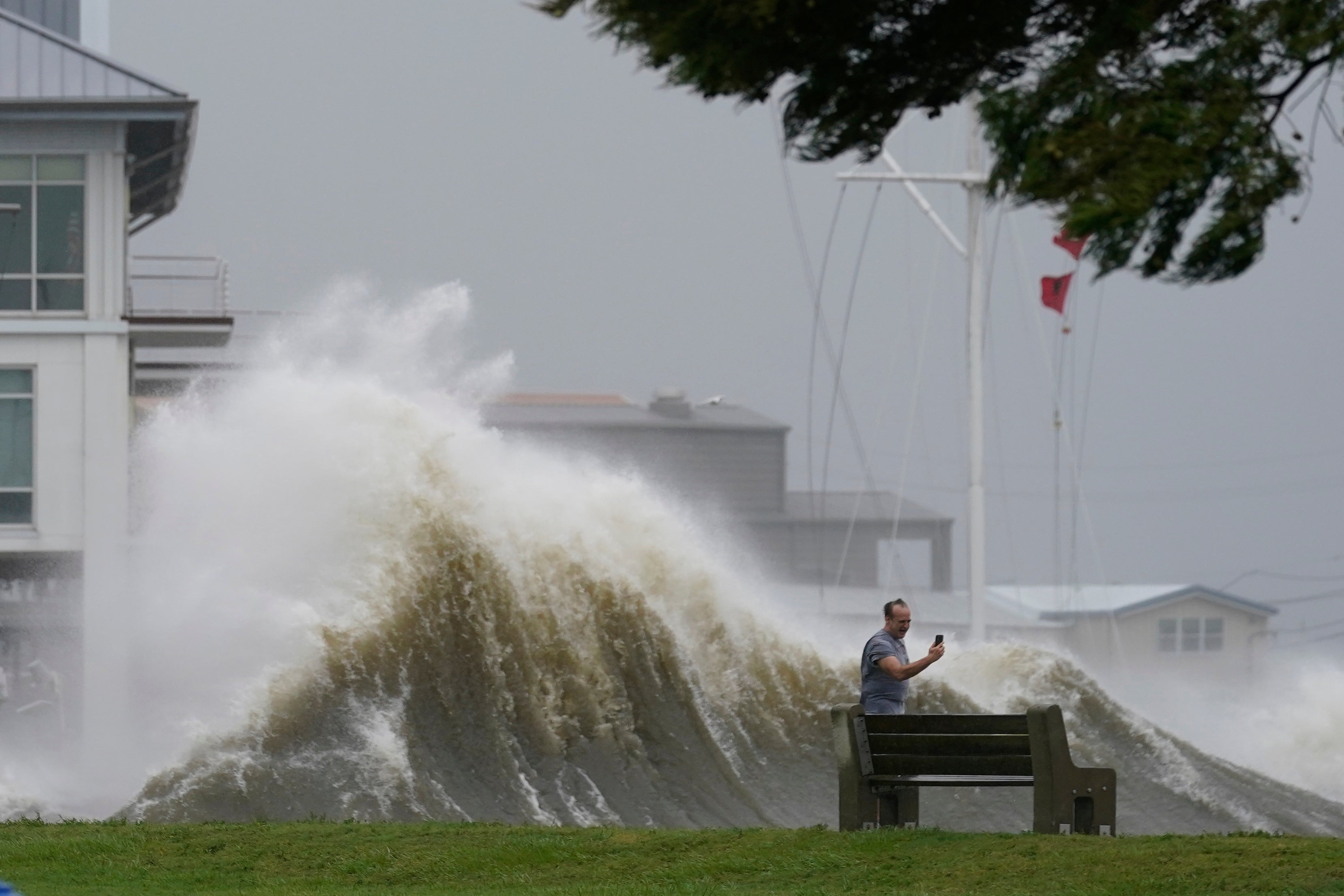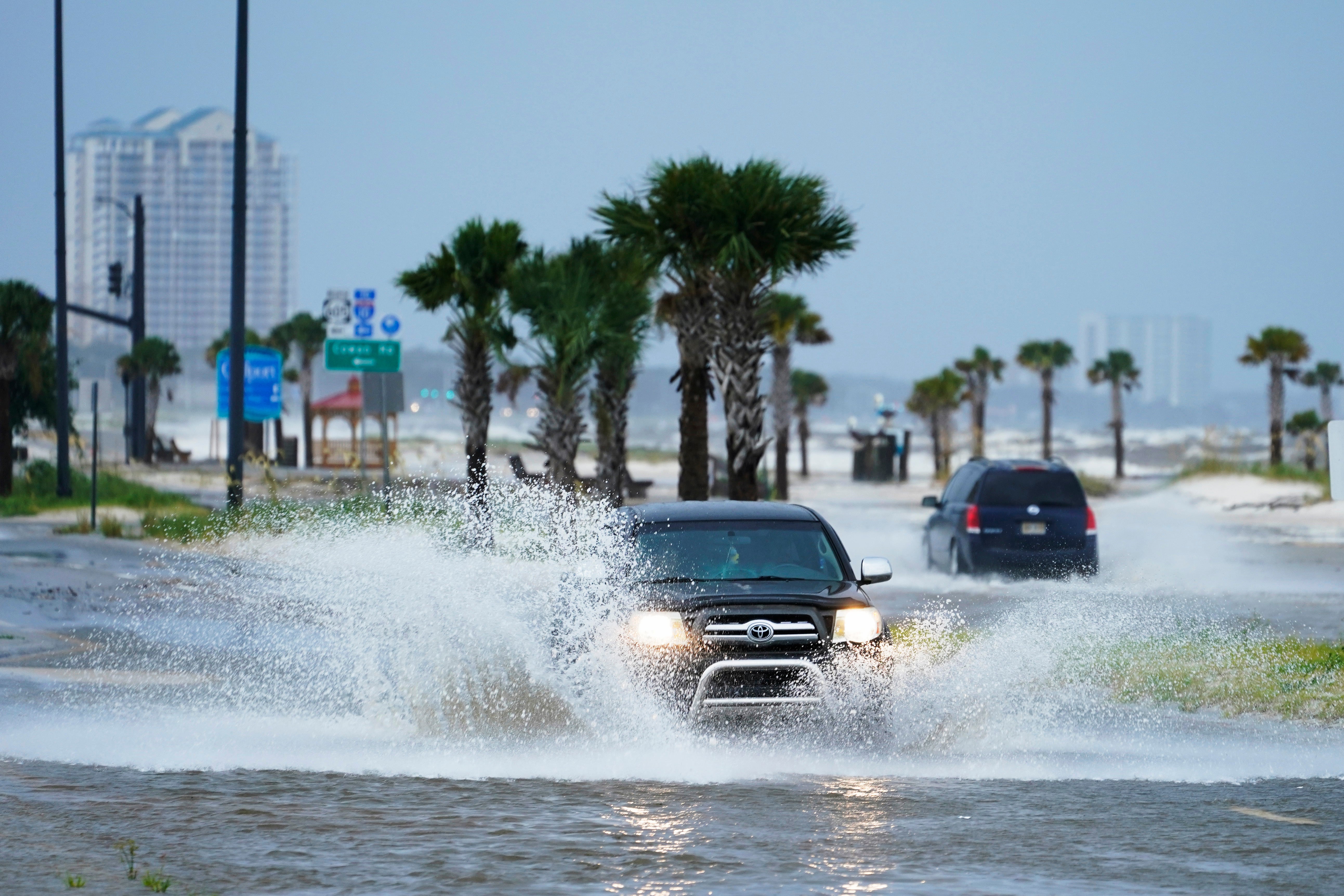Hurricane Ida makes landfall in Louisiana as ‘extremely dangerous’ Category 4 storm with 150mph winds
Hurricane Ida reached the southeastern coast of Louisiana near Port Fourchon at 11:55am
Hurricane Ida, a powerful category 4 storm with wind speeds of 150mph, made landfall on the southeastern coast of Louisiana on Sunday, exactly sixteen years to the day that Hurricane Katrina hit the state.
By Sunday afternoon, winds had damaged buildings in New Orleans, parts of Louisiana and Mississippi were flooded, and over 400,000 people in Louisiana had lost power.
At a press conference, President Joe Biden warned Americans to take the storm seriously.
“The storm is a life-threatening storm,” the president said. “And its devastation is likely to be immense. We shouldn’t kid ourselves. And so the most important thing I can say right now is that everyone, everyone should listen to the instructions from local and state officials, just how dangerous this is.”
Meanwhile, thousands fled the region after local officials and US weather authorities warned of a “life-altering” storm.
“Ida made landfall as an extremely dangerous Category 4 hurricane near Port Fourchon, Louisiana, with maximum sustained winds of 150 mph and a minimum central pressure of 930 mb (27.46 inches),” the National Hurricane Center said in a tweet.
According to a CNN analysis, these measurements mean Ida is tied with two other hurricanes for the record of Louisiana’s most powerful storm in history. The two other storms are the Last Island Hurricane of 1856 and Hurricane Laura of 2020. This also makes Louisiana the first state in history to face hurricanes with winds of over 150mph in two consecutive years.
The storm has not yet reached New Orleans, but the city lies directly in its path.
At a press conference on Sunday, Mayor LaToya Cantrell warned New Orleans residents to stay indoors.
“This is the time to stay inside,” Ms Cantrell said. “Do not venture out. No sightseeing. This is very serious.”
Louisiana’s governor, John Bel Edwards, said the state has been preparing for a storm like this since Hurricane Katrina, but Ida will still present a serious challenge.
“We’re as ready as we can be,” Mr Edwards told CNN. “This is going to be a very serious test for our levee systems, especially in coastal Louisiana, and for our people.”
The governor added that the hurricane comes at a very difficult time, as hospitals in the state are already treating huge numbers of people for Covid-19, making it difficult for them to take on new patients hurt by the storm.

In the 16 years since Katrina, the federal government has spent $14.5 billion on building levees, pumps, seawalls, floodgates, and drainage in and around New Orleans. As Ida approaches, some experts think the city is ready.
“The post-Katrina system is so different than what was in place before,” US Army Corps of Engineers spokesperson Matt Roe has said.
But Ida will severely test that system. According to the National Hurricane Center and the National Oceanic and Atmospheric Administration, the hurricane is likely to bring an “extremely life-threatening storm surge,” “catastrophic wind damage,” power outages, and “life-threatening flash and urban flooding” in Louisiana, Mississippi, and Alabama.
The Federal Emergency Management Agency has sent 2,400 of its employees to those states, as well as Georgia, Florida, and Texas.
Photos and videos posted online have already shown severe flooding, winds, and storm surges. One video from Biloxi, Mississippi showed the flooded parking garage of a casino. A photo from New Orleans showed Highway 90 completely underwater.
The storm is also wreaking havoc on Louisiana’s power grid. As of Sunday afternoon, more than 442,900 people in the state were without electricity. One energy provider, Entergy, said some customers will have to wait for weeks before their power is restored.
“Every storm is unique,” Entergy said on its website. “Based on historical restoration times, customers in the direct path of a Category 4 hurricane can experience outages up to three weeks and beyond three weeks for a Category 5 hurricane.”
Ida’s strongest winds are currently blowing at 150mph. At 157mph, it would become a Category 5 hurricane.

Join our commenting forum
Join thought-provoking conversations, follow other Independent readers and see their replies
Comments




Bookmark popover
Removed from bookmarks